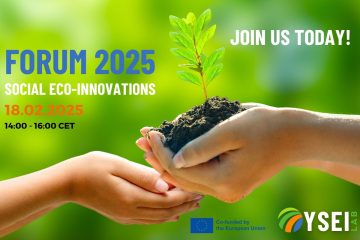Powered by the Youth Social Eco-Innovation Lab Project
In the face of global environmental challenges, the imperative to develop eco-innovations has never been more pressing. Eco-innovation refers to the creation and implementation of novel ideas, products, processes, or business models that contribute to environmental sustainability. This article aims to provide a comprehensive guide on how to build a specific concept for eco-innovation, emphasizing the integration of sustainable practices and the promotion of a greener future.
And remember, eco-innovation does not have to be, by default, an expensive system created by a company or a state. An eco-innovation can also be homemade, using ingenuity and knowledge of how the world operates. – (we offer such examples here: https://youthsociallab.eu/homemade-eco-innovations/)

Identifying the Problem
The first step in creating an eco-innovation is identifying a specific environmental problem or challenge. This could range from issues like pollution, resource depletion, or the carbon footprint associated with a particular industry or household activity. A thorough understanding of the problem is crucial for developing effective solutions.
Research and Knowledge Gathering
Once the problem is identified, extensive research is essential. This involves gathering information on existing technologies, processes, and initiatives related to the identified problem. Understanding the current state of affairs provides a foundation for developing a concept that goes beyond existing solutions and addresses gaps in the current eco-friendly landscape. Remember that most inventions or creations are not entirely new, but rather they build better on an already-existing foundation.
Concept Development
With a solid understanding of the problem and insights regarding it, the next step is to develop the eco-innovative concept. This involves brainstorming and ideation sessions to generate creative and sustainable ideas. The concept should align with the principles of the circular economy, emphasizing the efficient use of resources, minimizing waste, and promoting longevity.
Integration of Technology
Technology plays a pivotal role in eco-innovation. Consider incorporating cutting-edge technologies such as artificial intelligence, blockchain, or sustainable materials in your concept. For example, a concept aiming to reduce plastic pollution might explore the use of biodegradable materials or advanced recycling technologies.
Life Cycle Assessment
Performing a life cycle assessment (LCA) is crucial in understanding the environmental impact of the proposed concept throughout its entire life cycle. This assessment considers raw material extraction, production, distribution, use, and disposal. LCA helps identify potential environmental hotspots and guides adjustments to minimize overall impact.
Prototyping and Testing
Before full-scale implementation, it is advisable to create prototypes and conduct testing. This step allows for refining the concept based on real-world feedback and unforeseen challenges. It also provides an opportunity to assess the economic viability and scalability of the eco-innovation if your goal is to make it marketable.
Regulatory Compliance and Certification
Ensure that the eco-innovation concept complies with local and international environmental regulations. Seeking relevant certifications and endorsements validates the concept’s environmental credentials and enhances its market acceptance and credibility.
Communication and Marketing
Effectively communicating the benefits of eco-innovation is crucial for garnering support and adoption. Develop a robust marketing strategy that highlights the positive environmental impact, economic benefits, and societal advantages of the concept. Engaging in transparent communication fosters trust among stakeholders and potential users.
Conclusion
Building an eco-innovative concept demands a holistic and interdisciplinary approach, combining environmental awareness, technological integration, stakeholder collaboration, and effective communication. By following the outlined steps, individuals and organizations can contribute to the creation of sustainable solutions that address pressing environmental challenges, fostering a greener and more sustainable future for generations to come.


